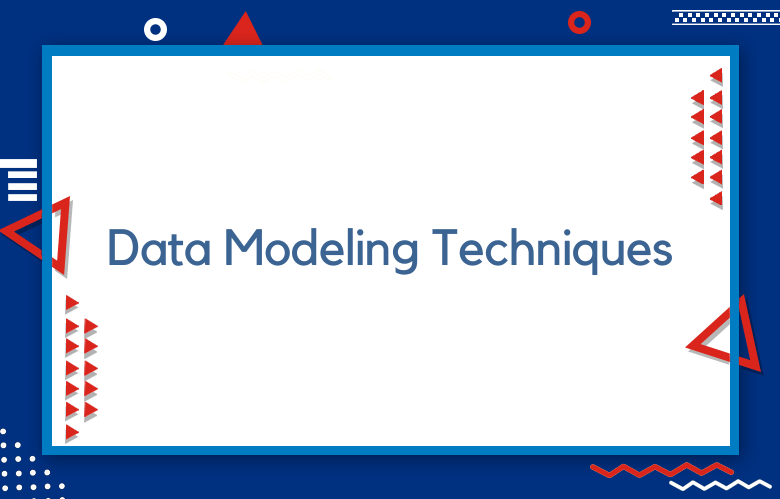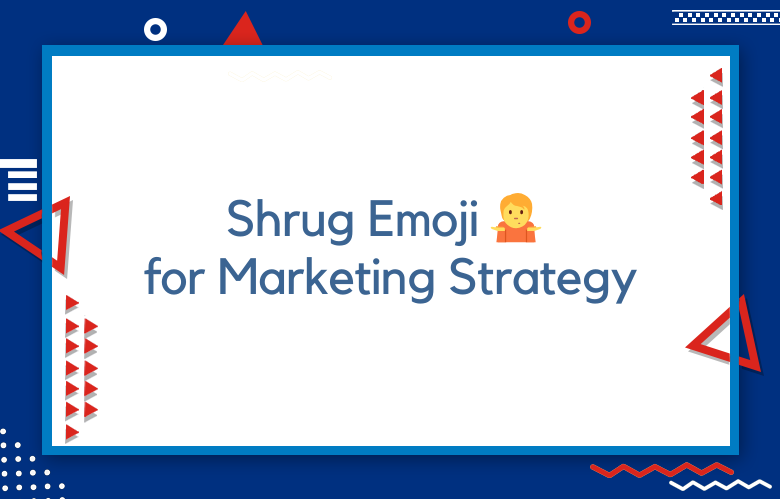Data Modeling Techniques for Digital Marketing Success

Digital marketing is an ever-evolving field that demands the consistent adaptation of marketing strategies to meet current market demand and audience interest. With the proper data modeling techniques, digital marketers may succeed, take advantage of ROI opportunities, and gain market share with competitors.
Successful digital marketing depends on the quality of data modeling practices. This article will uncover the best data modeling techniques for a successful digital marketing campaign.
In today’s digital age, data is crucial in driving business success. For digital marketers, leveraging data through data modeling techniques can bring significant benefits, such as improved customer experience, optimized digital campaigns, and better ROI.
However, with the vast amount of data available, it can be overwhelming to know where to start. We will discuss some effective data modeling techniques for digital marketing success.
What Is A Data Model?
A data model is a structured representation of a particular domain or application. It facilitates data organization, retrieval, and manipulation by defining the relationships, constraints, and properties of data elements within a database or information system.
A data model is a blueprint for designing and implementing databases and other data-oriented applications.
Data models typically feature various components, including entities, attributes, relationships, and constraints. Entities represent the objects or concepts of interest in a particular domain, such as customers, products, or orders.
Attributes describe the characteristics of entities, such as name, address, or price. Relationships specify how entities interact with each other, such as one-to-many, many-to-many, or hierarchical relationships.
Constraints define rules and requirements that data must adhere to, such as data types, uniqueness, or referential integrity.
What are Marketing Data Analytics Models?
Marketing Data Analytics Models are methods that are utilized by businesses to extract valuable insights from the vast amount of data that they collect during their marketing campaigns.
These models allow businesses to effectively gather and analyze information about customer behavior, needs, preferences, and purchase patterns, which can then be used to improve the efficacy of their marketing strategies.
Businesses use numerous marketing data analytics models to collect and analyze data, ranging from simple regression models to complex machine learning algorithms. Some popular models include market basket analysis, customer lifetime value modeling, and predictive modeling.
Market basket analysis is used to study customers’ purchasing behavior and identify patterns in their buying habits.
On the other hand, customer lifetime value modeling is a method that helps businesses predict the future value of a customer to their company and use this information to optimize their marketing campaigns.
How Is Data Modeling Used In Digital Marketing?
Data modeling is invaluable in digital marketing because it helps analyze and organize vast amounts of data from various sources.
In digital marketing, data modeling helps restaurants, coffee shops, hotels, and eCommerce stores make data-driven decisions to enhance the customer experience, drive sales, improve retention, and stay competitive.
Data modeling visualizes data relationships to identify patterns, plan future strategies, and inform decision-making.
By creating a precise model of the data, marketers can gain a deeper understanding of their customer’s preferences, buying habits, and overall behavior.
For instance, data modeling allows marketers to identify content that resonates with their customers. This way, marketers can create tailored messages that speak directly to their target audience, which leads to higher engagement and conversion rates.
Data modeling helps businesses optimize their marketing campaigns by analyzing customer interactions across channels.
What Benefits Does Data Modeling Provide?
Increased Efficiency
Data modeling is an essential part of any organization’s data management strategy, as it helps to make data more efficient and easier to use.
By creating a logical structure for data, organizations can ensure that all relevant information is stored in the same place and can be accessed quickly and easily. This helps reduce the time spent searching for and retrieving data, which increases efficiency and reduces costs.
Improved Accuracy
Data modeling also helps improve accuracy by storing data in consistent formats across different systems.
By standardizing how data is stored, organizations can ensure that all relevant information is up-to-date and accurate, reducing the risk of errors or omissions. This helps to improve decision-making processes and reduce the potential for costly mistakes.
Enhanced Security
Data modeling also improves security by helping organizations identify vulnerabilities within their systems. Organizations can better protect their sensitive information from unauthorized access or manipulation by understanding how data is structured and where it is stored.
Using a well-defined model makes detecting suspicious activity within a system more accessible, allowing organizations to respond quickly if there is a breach or other security issue.
Reduced Data Redundancy
Data redundancy occurs when multiple copies of the same information are stored in different locations or systems within an organization’s network.
This can lead to confusion when accessing or updating information and increased storage costs due to duplicate files taking up space on servers or hard drives.
Data modeling helps reduce redundancy by providing an organized structure for storing data so that only one copy needs to be maintained at any given time.
Improved Scalability
Data models provide scalability by allowing organizations to easily add new features or applications without modifying existing ones.
By leveraging existing models, new features can be added quickly and efficiently with minimal disruption to existing operations or infrastructure requirements.
Using standardized models also allows developers to create reusable components that can speed up development times significantly while helping maintain consistency across different applications or platforms.
Greater Insights
Using data models also allows organizations to gain more significant insights into their operations as they can visualize relationships between different pieces of information more clearly than before.
This allows them to understand customer behaviors better, identify patterns in customer behavior, uncover hidden correlations between different variables, and develop more effective marketing strategies.
This enhanced visibility into their operations enables organizations to make better-informed decisions about utilizing their resources.
Increased Collaboration
Data models also facilitate team collaboration by providing a common language for discussing ideas, sharing knowledge, and exchanging feedback.
By creating a shared understanding of data structure, teams can work together more effectively toward achieving common goals.
This improved collaboration encourages innovation as team members can develop creative solutions for problems they may encounter.
Streamlined Processes
Data models help streamline processes by identifying areas where improvements could be made. For example, if specific tasks take too long, analyzing the underlying process may reveal bottlenecks that need addressing to increase efficiency.
Similarly, understanding how different parts of an organization interact with each other may allow managers to identify areas where processes could be automated, resulting in cost savings over time.
Maximize ROI with Data Modeling in Digital Marketing
Digital marketing is an ever-evolving industry that requires businesses to stay ahead of the curve to reach their target audience.
One of the most crucial components of digital marketing is data modeling, which uses statistical algorithms to identify patterns and trends in data.
By leveraging data modeling in digital marketing, businesses can maximize their return on investment (ROI) and achieve unparalleled success.
Data modeling in digital marketing helps businesses make informed decisions by analyzing consumer behavior, sales patterns, and marketing tactics.
This information can be used to create highly targeted campaigns that are more likely to convert leads into customers.
In addition, data modeling can help businesses optimize their marketing efforts by identifying which channels are generating the most leads and which are underperforming.
Why Data Modeling Is Essential for Modern Digital Marketers
Data modeling is a crucial aspect of modern digital marketing that has become increasingly essential in recent years.
With the explosion of digital technologies and the ever-increasing sophistication of marketing techniques, it has become critical to have a solid understanding of how data works and how to use it to drive business outcomes. This is where data modeling comes in.
At its core, data modeling is the process of creating abstract representations of real-world data structures.
This can involve creating databases, data warehouses, and other structures to support marketers’ needs. By making these structures, marketers can better understand customer behavior, preferences, and needs.
Integrating Data Models as a Core Component of Your Marketing Strategy
Integrating data models into a business’s marketing strategy is proving to be a crucial component in achieving success. With the ability to analyze consumer behavior and preferences, companies can create targeted campaigns and content that resonate with their audience, resulting in higher engagement, conversion rates, and, ultimately, ROI.
Data models allow businesses to gather and organize vast amounts of customer information, including demographic data, browsing history, purchase behavior, and social media activity.
Using artificial intelligence and machine learning, this data can be evaluated and used to predict future behavior and buying patterns, allowing businesses to tailor their marketing efforts accordingly.
How Different Types of Data Models Are Used in Digital Marketing
Relational Data Model
The relational data model is the most commonly used in digital marketing. This type of model stores data in tables with columns and rows, each representing a single record.
This model type is excellent for storing large amounts of structured data, such as customer or product information. It also allows easy data manipulation, making it ideal for creating reports or analyzing trends.
Graph Data Model
The graph data model is a type of NoSQL database that stores data in nodes and edges. Nodes represent entities such as customers or products, while edges represent relationships between those entities.
This model is great for understanding complex relationships between data types, such as how customers interact with various products over time.
Time Series Data Model
The time series data model stores data over time, allowing marketers to track changes in user behavior over time. This model can identify trends or patterns in customer behavior, which can then be used to inform marketing strategies and campaigns.
This model can measure the success rate of campaigns by tracking how users respond to different messages at different times.
Hierarchical Data Model
The hierarchical data model stores data in a tree-like structure with parent-child relationships between items.
This model type is great for organizing large amounts of related information into categories and subcategories, making it helpful in managing customer profiles or product catalogs.
This model can be used to create navigation menus or search filters on websites or apps that allow users to quickly find what they are looking for without having to sift through large amounts of unrelated content.
Harnessing the Power of Data Modeling in Digital Marketing Campaigns
Data modeling is a powerful technique that has become increasingly important in digital marketing campaigns. In today’s fast-paced business environment, data-driven decision-making is essential to stay ahead of the competition.
Data modeling creates a mathematical representation of a real-world system, which can be used to analyze and predict behavior. In digital marketing, this means using data to understand consumer behavior, identify trends, and optimize marketing strategies.
One of the key benefits of data modeling is its ability to reveal insights that may need to be made apparent through simple observation. By analyzing large datasets, data modeling can uncover patterns and relationships that would be impossible to detect otherwise.
For example, by analyzing customer data, a marketer might discover that customers who purchase certain products are more likely to buy complementary items. With this information, the marketer can adjust their messaging and promotions to target these customers better.
Embracing Data Modeling for Better Marketing Results
Data modeling has become an indispensable tool for modern marketers seeking to optimize their results. The process involves creating a visual representation of the analyzed data, allowing marketers to understand their target audience better and tailor their campaigns accordingly.
By embracing data modeling as a critical element of their marketing strategy, companies can gain insights into the preferences and behaviors of their customers, enabling them to develop more effective campaigns and drive increased sales.
One of the critical advantages of data modeling is that it enables marketers to identify patterns and trends that may take time to become apparent through other forms of analysis.
By examining a range of variables, including demographics, purchase history, and social media activity, among others, marketers can comprehensively understand their target audience and develop campaigns that resonate with their specific preferences and needs.
Benefits of Data Modeling in Digital Marketing
Improved Understanding of Customer Behaviour
Data modeling in digital marketing can help businesses better understand customer behavior.
Businesses can gain valuable insights into how customers interact with their brands by analyzing data from various sources, such as website visits, social media interactions, and online purchases.
This allows them to tailor their marketing strategies better to meet the needs and preferences of their target audience.
Enhanced Targeting Capabilities
Data modeling also enhances the targeting capabilities of digital marketing campaigns. By analyzing customer data, businesses can identify critical segments within their target audience and create campaigns tailored to each segment’s specific needs and preferences.
This ensures that campaigns are more effective and efficient in reaching the right people at the right time with the right message.
Increased ROI
Data modeling also helps increase a digital marketing campaign’s return on investment (ROI) by allowing businesses to optimize spending on various channels and platforms.
By analyzing customer data, businesses can determine which channels are most effective for reaching their target audience and allocate more budget towards those channels while reducing spend on less effective media. This helps maximize the impact of each campaign while minimizing costs.
Improved Personalization Strategies
Data modeling in digital marketing also enables businesses to develop more personalized customer engagement strategies. By leveraging customer data, companies can create highly customized experiences that speak directly to each individual’s needs and preferences, resulting in higher levels of engagement and loyalty from customers.
Accurate Forecasting & Planning
Data modeling also allows businesses to accurately forecast trends and plan for upcoming campaigns or initiatives. By analyzing customer data, companies can identify potential opportunities or challenges and plan accordingly to be better prepared for any eventuality that may arise during a campaign or initiative launch.
Better Optimization Strategies
Data modeling also helps improve optimization strategies by allowing businesses to identify areas where they can make improvements or adjustments to maximize performance or minimize costs associated with a campaign or initiative launch.
By utilizing customer data, businesses can continuously monitor performance metrics such as click-through rates, conversion rates, cost per acquisition (CPA), etc., allowing them to quickly identify areas where changes need to be made to ensure optimal results.
Enhanced Automation Capabilities
Data modeling also enhances automation capabilities by allowing marketers to automate segmentation, targeting, personalization, optimization, etc.
This helps save time and ensures that tasks are completed accurately, as automated processes do not suffer from human error. In addition, automation allows marketers to focus on other aspects of their job, such as creative development, strategy formulation, etc.
Improved Decision-Making Processes
Lastly, data modeling helps improve decision-making processes by providing marketers with accurate information about customer behavior, which they can use when making decisions about new products, services, campaigns, initiatives, etc.
Access to this type of information allows marketers to make informed decisions based on actual customer behavior rather than assumptions or guesswork, ultimately leading to better business outcomes.
Enhancing Digital Marketing Strategy with Customer Personas
Digital marketing strategy is evolving rapidly, and businesses must keep up with the changing trends to remain competitive online. One of the most effective ways to enhance digital marketing strategy is to create customer personas.
Put, customer personas are fictional representations of your ideal customers. These personas are based on research and analysis of your customer base, helping you understand their behaviors, motivations, preferences, and pain points.
With customer personas, you can tailor your marketing efforts to specific groups of consumers to increase engagement and conversions.
Creating targeted content that resonates with your customer personas can establish a stronger connection with your audience, build trust, and foster long-term relationships.
Measuring Engagement: Uncovering Insights with Data Modeling
Measuring engagement is crucial in understanding the effectiveness of marketing campaigns, social media strategies, and customer experience initiatives.
With the help of data modeling, businesses can uncover insights into customer behavior, preferences, and satisfaction levels. This valuable information can aid decision-making and lead to more successful and profitable outcomes.
Data modeling has become increasingly popular as it provides a framework for creating and analyzing data sets. It involves developing a mathematical model that simulates real-world scenarios and can be used to predict customer behavior.
Applying advanced statistical methods to this model allows businesses to identify trends, patterns, and relationships between various data points.
Optimizing Digital Marketing Campaigns with Data Modeling
Digital marketing campaigns have become increasingly intricate, involving a combination of various tools and platforms.
The vast amount of data generated through these campaigns can be overwhelming and challenging to understand. This is where data modeling comes in to optimize digital marketing campaigns.
Data modeling creates a data model, a visual representation of the data structure. This enables marketers to understand the relationships between data points, identify patterns, and make informed decisions.
By analyzing data and creating a model, marketers can identify what is working in their campaigns and what needs improvement.
One of the most significant advantages of data modeling is that it enables marketers to make data-driven decisions.
Instead of making assumptions or relying on intuition, data modeling provides insights into how consumers interact with the campaign. This can lead to more effective campaigns and a higher return on investment.
Leveraging Data Modeling for Improved Marketing Decisions
Organizations increasingly rely on big data to inform their strategic decision-making processes in today’s fast-paced business landscape.
In particular, data modeling has emerged as a powerful tool for companies looking to optimize their marketing efforts and gain a competitive advantage in their respective industries.
Businesses can better understand customer preferences, behaviors, and needs by leveraging data modeling techniques. This allows companies to tailor their marketing messages and promotional offers to specific target demographics, resulting in more effective and efficient campaigns.
One of the key benefits of data modeling is that it allows marketers to make more informed decisions based on empirical evidence rather than intuition or assumptions.
By collecting and analyzing large datasets, businesses can identify patterns and trends that might go unnoticed and use this information to make more accurate predictions about customer behavior.
How Data Modeling Drives Better Results in Digital Marketing
Digital marketing is a vast and rapidly evolving field characterized by intense competition, complex consumer behavior, and the ever-increasing need for data-driven decision-making.
In the face of these challenges, digital marketers must leverage the power of data modeling to improve the effectiveness and efficiency of their campaigns.
Data modeling creates a visual representation of complex data sets that allows easy analysis and interpretation. By modeling data, digital marketers can gain insights into consumer behavior, identify trends and patterns, and optimize their marketing strategies accordingly.
Data modeling also helps marketers identify gaps in their data sets and fill in the missing pieces, which is crucial for making accurate and informed decisions.
How to Leverage Data Modeling in Digital Marketing
As digital marketing becomes increasingly data-driven, businesses are beginning to realize the value of data modeling. By accurately modeling data, digital marketers can better understand their audience and make informed decisions about their marketing strategies.
Data modeling involves creating a visual representation of data to identify relationships, patterns, and trends. This can be done using various tools and techniques, such as entity-relationship diagrams and data flow diagrams.
Once the data is correctly modeled, it can inform decisions such as targeting specific segments of a company’s audience, predicting customer behavior, and measuring the effectiveness of campaigns.
Understanding the Basics of Data Models in Digital Marketing
In the modern world of digital marketing, data has become the backbone of successful strategies. The effective use of data allows businesses to understand their target audiences, customer behavior and preferences, and market trends, enabling them to make informed decisions that drive growth and increase consumer engagement.
To achieve this, organizations must employ data modeling techniques, which provide a conceptual representation of the data and its relationships.
Data models are fundamental to the interpretation of data and serve as the foundation for businesses to analyze, manipulate, and transform large volumes of information into valuable insights.
A data model is a framework that defines data structure, layout, and organizational principles. Digital marketers use various types of data models, such as relational, object-oriented, or NoSQL, depending on the nature of their business data and its processing requirements.
Using Data Modeling to Predict Target Consumer Behavior
Data modeling is the process of creating a conceptual representation of data structures and relationships that exist within a particular business or industry. This powerful tool enables enterprises to use statistical analysis and cognitive computing to predict target consumer behavior accurately.
Data modeling lets Businesses gain insights into consumer preferences, habits, and purchasing behaviors. These insights can be derived from various sources, such as website analytics, social media data, market research, sales data, and customer feedback.
By utilizing data modeling techniques, businesses can identify the factors influencing consumer behavior, such as pricing, quality, availability, and brand reputation. This information can then be used to develop targeted marketing strategies that effectively reach and engage the ideal customer demographic.
Measuring Engagement with Data Modeling for Better Results
Engagement is critical to any successful business or organization; data modeling can effectively measure and improve it. When appropriately used, data modeling can help companies gain valuable insights into customer behavior, employee performance, and other vital metrics.
One of the most important aspects of data modeling is understanding how to collect and analyze relevant data. This can include everything from sales figures and customer feedback to social media activity and website traffic.
By tracking and measuring these metrics, businesses can identify patterns and trends to help them make more informed decisions and drive better results.
Optimizing Digital Marketing Campaigns with Data Modeling Insights
In today’s digital age, companies rely heavily on digital marketing campaigns to reach their target audience and drive revenue. With so much competition in the online space, using data modeling insights to optimize your campaigns and drive better results is essential.
Through data modeling, companies can analyze critical metrics such as click-through rates, conversion rates, and customer demographics to understand how their audience interacts with their campaigns.
By using this data to inform strategic decision-making, companies can improve the effectiveness of their campaigns and target their audience more effectively.
One of the most significant advantages of data modeling is its ability to predict future outcomes.
Companies can create models forecasting their campaigns’ performance under different scenarios by analyzing historical data and identifying patterns. This enables them to decide where to invest their marketing budget and which strategies to prioritize.
Conclusion:
Digital marketing has become a critical aspect of marketing today. The crucial factor is data modeling techniques involving data quality, optimization, segmentation, visualization, and analytics.
These five techniques are essential aspects of digital marketing that, when utilized, lead to an effective campaign.
With these techniques, the digital marketer can create a marketing campaign that aligns with their target market, meets market demand, and monitors its effectiveness. Successful data modeling increases ROI, business success, and competitive edge.
Data modeling techniques can significantly enhance digital marketing success by providing valuable insight into customer behavior and preferences.
Segmentation, predictive modeling, funnel analysis, customer lifetime value modeling, and sentiment analysis are just a few
data modeling techniques that can be used to drive business growth.
By applying data modeling techniques to digital marketing strategies, companies can make better decisions, improve customer experience, and ultimately achieve their business goals.
Call: +91 9848321284
Email: [email protected]



